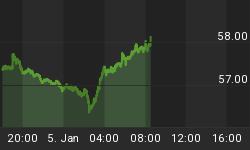Investing in the financial markets is about assessing probabilities of both positive and negative outcomes. You should approach the market with neither a bullish nor a bearish bias. The S&P 500 has been holding up relatively well since the November 20, 2008 low. A sideways pattern in the markets is often referred to as a base. Wall Street as a whole approaches the markets with a significant bullish bias. As a result, the S&P 500's recent basing pattern has been met with almost a universally positive reaction.

During a bear market bases can have bullish implications as a market bottom tends to occur over time. We have touched on this topic in Bear Markets Tend To Retest Lows. We have also acknowledged recent positive developments in market breadth since the November 2008 lows (see Breadth, "Accounting Problems", and Gold).


In 2009, another feather in the bearish cap is sentiment. Many indicators paint somewhat of a carefree reaction to the market's big drop after the government's PR disaster on Tuesday. Sentiment is a contrary indicator. When people are bullish or complacent, it sets the stage for possible losses. More information on current sentiment can be found in Mark Hulbert's article What Me Worry?.
While acknowledging a basing pattern can be a sign of a bottoming process and bullish, history shows us that a base during a bear market can also occur just prior to another painful leg down for investors. In both the 2000-2002 and 1974-1975 bear markets, investors were bullish as bases formed.


The primary trend in stocks remains down, which means the odds favor lower lows after this base. If we were in a bull market, odds would favor higher highs after a base. We are not in a bull market. The purpose here is not to make a bearish forecast for the 2009 markets, but to highlight the need to balance the lopsided reaction to the market's recent base.















